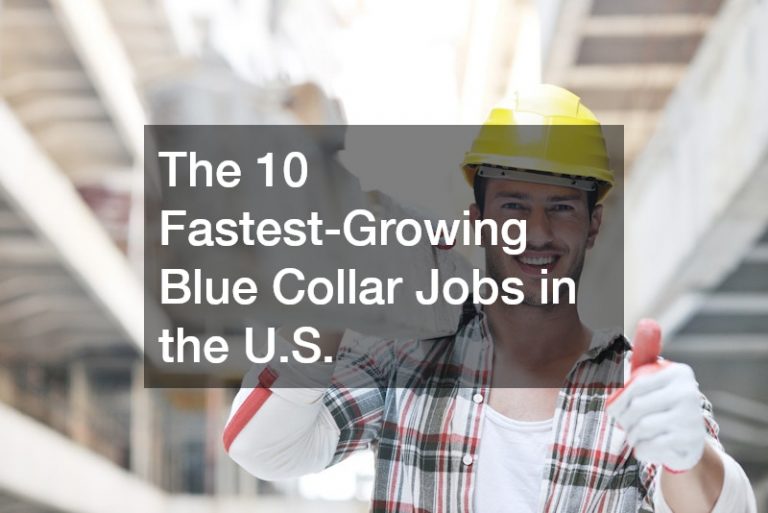The landscape of the metal industry is rapidly evolving, with numerous factors shaping its future and influencing the availability of metal industry jobs. As technology advances, industries adapt, demanding a more skilled workforce that can handle modern techniques and tools. This article explores the emerging trends, challenges, and opportunities within the metal industry, focusing on how various sectors are adapting to meet these new demands.
Metal industry jobs are central to the global economy, encompassing a range of professions and specializations. From metal fabricators and welders to designers of contracted steel art, the scope is vast. Continuous innovation coupled with an increasing demand for skilled labor makes it a dynamic field full of potential growth.
Moreover, the industry’s push toward sustainability and efficiency introduces unique challenges and opportunities. With advanced training programs and technological innovations transforming the sector, there is much to consider for both current professionals and newcomers alike.
The Rising Demand for Skilled Labor in Metal Fabrication

The metal fabrication industry is witnessing a significant rise in demand for skilled labor, driven primarily by technological advancements and market expansion. Metal industry jobs now require individuals who are not only good with traditional methods but also proficient with modern techniques. Skilled professionals are increasingly necessary to meet the complex demands of new-age projects.
Moreover, metal fabricators are finding roles in diverse settings, from large industrial setups to small local carport companies. There’s an emphasis on efficiency and precision, necessitating a thorough understanding of advanced machinery and novel fabrication processes. This surge in demand has heightened the need for comprehensive training programs that can bridge the skill gap.
Furthermore, the integration of automation and robotics in the fabrication process has set new benchmarks for productivity, requiring a workforce adept at operating these systems. The industry is now prioritizing onboarding talent that can adapt to changing technologies and methodologies. This ensures companies remain competitive in an ever-evolving market.
Innovations in Metal Rolling Techniques: What to Expect
The future of metal rolling speaks to incredible innovation, with emerging techniques reshaping industry standards. New technologies are enhancing precision and efficiency, making it faster and more economical to produce complex shapes and forms. These innovations are not only revitalizing traditional methods but are also expanding the range of possibilities for metal industry jobs.
Advanced metal rolling processes are incorporating computer-aided design and manufacturing technologies. This shift allows for detailed customization and reduced production times, positioning metal rolling at the forefront of modern fabrication techniques. As these methods gain traction, skilled labor trained in both traditional and digital approaches becomes critically essential.
Additionally, new materials and alloys are being developed, allowing metal rolling to accommodate more specialized applications. This evolution requires continuous learning and adaptation from professionals within the industry. Enhanced material capabilities are expected to improve overall project flexibility, contributing to an enriched scope of metal industry jobs.
How Welding Classes Training is Evolving to Meet Industry Needs

The demand for advanced welding skills has led to an evolution in welding classes training programs, tailoring curriculums to meet industry needs. With the advent of new welding technologies, traditional training methods are being reimagined to incorporate modern techniques. This shift ensures that participants are equipped with the knowledge to excel in metal industry jobs.
New training modules now focus on automation, robotics, and advanced material sciences. By understanding the latest welding practices, workers can maintain competitive edges, ensuring their skills remain relevant and in demand. Furthermore, the introduction of virtual and augmented reality tools in training environments offers immersive learning experiences, simulating real-world applications.
Additionally, partnerships between industry leaders and educational institutions are on the rise, fostering programs that align with current and future market demands. These collaborations ensure a streamlined transition from education to employment, equipping students with essential skills for metal-related careers. The focus on comprehensive training reflects the industry’s commitment to cultivating a well-prepared workforce.
The Future of Water Jet Cutting in Metal Manufacturing
Water jet cutting is revolutionizing metal manufacturing, offering superior precision and versatility over traditional cutting methods. This technology uses a high-pressure jet of water to cut materials, allowing for increased accuracy and reduced waste. As these tools become more sophisticated, the demand for skilled workers proficient in using them continues to grow, creating new metal industry jobs.
Water jet cutting’s ability to slice through a variety of materials, including thick metals, makes it invaluable for complex projects. This flexibility is driving its adoption across multiple manufacturing sectors, from aerospace to automotive industries. Professionals familiar with operating and programming water jet systems are becoming highly coveted within the industry.
The eco-friendly nature of water jet cutting also aligns with growing environmental concerns, making it a preferred choice for sustainable manufacturing processes. This focus on sustainability is reflected in industry shifts, prompting an increased need for specialists who can integrate such technologies. As demand for eco-conscious production methods rises, so do opportunities in associated careers.
Trends in Aluminum Fabrication: Meeting Market Demands
Aluminum fabrication is experiencing notable trends, driven by market demands for lightweight and durable materials. This metal’s versatility and sustainability have made it a popular choice in various industries, from construction to consumer electronics. Meeting these demands requires a workforce skilled in cutting-edge fabrication techniques.
One significant trend within aluminum fabrication is the integration of automation and digital technology, making processes more efficient and precise. This technological shift is reshaping the labor landscape, emphasizing the need for workers adept at operating sophisticated machines. As a result, the quest for highly trained professionals continues to propel the growth of metal industry jobs.
Moreover, the increased focus on sustainable manufacturing practices has amplified the importance of aluminum in the industry. This shift towards greener methods calls for innovative approaches to fabrication, ensuring eco-friendly production processes. As these trends persist, opportunities for specialized roles in aluminum fabrication are set to expand.
The Role of Structural Steel Fabrication in Sustainable Construction

Structural steel fabrication plays a pivotal role in promoting sustainable construction, offering both strength and recyclability. Its extensive use in architectural projects underscores its importance in creating durable and ecologically responsible structures. This increased emphasis on sustainability is shaping the future of metal industry jobs, as professionals are needed to bring these projects to life.
Innovations in fabrication techniques are making steel even more appealing for green construction. Modern fabrication processes minimize waste and optimize material usage, supporting the global move toward sustainable practices. As the construction industry increasingly prioritizes eco-friendly designs, demand for expertise in structural steel fabrication is set to rise substantially.
The industry’s commitment to sustainability is also evident in collaborative projects that champion innovative design and material efficiency. These partnerships across sectors highlight the growing need for a skilled workforce that can integrate environmental considerations into fabrication processes. Consequently, metal industry jobs in structural steel fabrication are gaining newfound relevance and prominence.
Navigating Career Paths in Contracted Steel Art Design

Contracted steel art design offers unique career paths, merging creativity with technical expertise. This field involves crafting intricate and aesthetically pleasing structures, requiring both artistic vision and proficiency in steelwork. The burgeoning interest in customized steel art presents numerous opportunities within the realm of metal industry jobs.
Success in contracted steel art design calls for a blend of skills, including understanding structural requirements and mastering diverse fabrication techniques. Professionals in this niche must also stay abreast of design trends, ensuring their work aligns with market expectations. As demand for bespoke metal installations increases, so does the necessity for specialized training and experience in this area.
Besides creativity, careers in steel art design are increasingly defined by collaborations between artists, architects, and engineers. These partnerships foster innovative methods that push the boundaries of traditional steelwork. As such, aspiring designers must develop a comprehensive skill set, positioning themselves as valuable assets in this creative and dynamic sector.
Opportunities for Growth in Local Carport Companies
Local carport companies are witnessing significant growth opportunities, fueled by increasing demand for customizable, durable structures. These companies are integral to the broader metal industry, requiring a skilled workforce to produce and install high-quality carports. This expansion generates a wealth of metal industry jobs, particularly for those proficient in design and fabrication.
Adaptable designs and material options allow local carport companies to meet diverse customer needs, ranging from residential to commercial solutions. As offerings expand, so too does the need for innovation and expertise in materials like aluminum and steel. This diversity of demand fosters a thriving employment landscape for skilled artisans and technicians.
Moreover, the trend toward environmentally friendly construction is prompting companies to adopt sustainable practices. The integration of green technologies and materials into carport design is adding new dimensions to traditional roles, necessitating continuous education and adaptation. As these changes unfold, opportunities within local carport companies are expected to flourish.
The Impact of Advanced Technologies on Metal Forming Processes
Advanced technologies are reshaping metal forming processes, introducing efficiencies and capabilities that revolutionize industry standards. Modern tools and automation have significantly reduced production times and costs, transforming how metal forming companies operate. This evolution presents exciting opportunities for metal industry jobs, as skilled workers become central to leveraging these advancements.
The rise of smart manufacturing techniques, such as predictive analytics and machine learning, is driving innovation in metal forming. These technologies enable real-time adjustments, optimizing production quality and output. Consequently, there is an increased demand for professionals who can harness these tools to enhance operational efficiency.
Additionally, the integration of digital modeling and simulation is allowing for greater precision and experimentation in product design. As metal forming company leaders embrace these advanced practices, the industry requires a workforce that is adaptable and technically knowledgeable. This shift underscores the significance of continuous skill development in navigating this technologically driven landscape.
Shifts in Design Trends for Iron Gates and Their Impact on Jobs
The iron gate design sector is experiencing shifts, driven by evolving consumer preferences and architectural trends. As aesthetic and functional demands evolve, there is a surge in unique and modern gate designs, influencing the types of metal industry jobs available. Skilled artisans capable of custom work are increasingly sought after in this changing landscape.
Contemporary design trends in iron gates emphasize minimalism and intricate detailing, challenging traditional manufacturing methods. To meet these demands, professionals are required to blend creative artistry with technical skills, ensuring productions align with client expectations. This shift is generating opportunities for artists, designers, and fabricators adept at melding innovation with craftsmanship.
Incorporating advanced technologies, such as robotic welding and CAD systems, is also shaping design capabilities. These tools facilitate precision engineering, allowing for intricate and bespoke gate designs. As a result, individuals skilled in using these technologies are finding themselves at the forefront of this dynamic and evolving sector.
Adapting to Changes: The Future of Metal Fabricators
The future for metal fabricators is defined by their ability to adapt to rapid technological and market changes. As industries demand more specialized and precise metalwork, fabricators must cultivate a versatile skill set that includes both traditional craftsmanship and modern techniques. This adaptability is crucial for capitalizing on the growing spectrum of metal industry jobs.
Continual advances in digital technology and automation are necessitating an evolution in the role of metal fabricators. Individuals must now possess skills beyond manual techniques, including proficiency in computerized systems and innovative fabrication methods. This expanded skill set enhances job prospects, ensuring fabricators remain competitive in an ever-shifting market.
The industry’s focus on sustainability is also shaping the future of fabrication processes. Metal fabricators are tasked with integrating eco-friendly practices, demanding a deeper understanding of new materials and green technologies. By embracing these changes, professionals can secure their place in the dynamic future of metalworking.
The Importance of Continuous Training in the Metal Industry
Continuous training is paramount in the metal industry, ensuring professionals remain skilled in current and emerging techniques. As the sector evolves rapidly, ongoing education becomes essential for maintaining relevant competencies and securing metal industry jobs. This commitment to lifelong learning equips workers with the tools needed to excel amidst technological advancements.
Training programs are diversifying, offering specialized courses that address new industry challenges and technological integrations. Welding classes training, for example, now include modules on automation and advanced materials. These programs ensure that workers can meet the demands of modern fabrication and construction projects.
Furthermore, industry collaborations with educational institutions are fostering tailored training initiatives. These partnerships blend academic knowledge with practical application, ensuring the workforce is equipped to tackle real-world problems. Continuous training thus becomes a strategic effort to align skill sets with industry evolution, benefiting both employers and employees alike.
Exploring Emerging Roles in Specialty Metal Production
Specialty metal production is an emerging sector, offering novel roles and opportunities within the broader metal industry. With an emphasis on creating high-performance alloys and materials, the sector attracts talent interested in pioneering work and innovation. As these specialized processes gain prominence, demand for metal industry jobs in this niche is increasing.
Emerging roles in specialty production often require an amalgamation of skills, from material science knowledge to advanced manufacturing techniques. Professionals entering this field must be adept at working with cutting-edge technologies and understand the intricacies of custom alloy creations. This interdisciplinary approach underscores the industry’s focus on attracting versatile and innovative talent.
Additionally, the push for sustainable practices is influencing specialty production, highlighting the need for materials that balance performance with eco-friendly attributes. As new markets emerge, professionals are tasked with developing solutions that address sustainability challenges. This interplay between innovation and responsibility fuels growth and opportunity within the sector.
The metal industry is a dynamic and ever-evolving field, characterized by rapid advancements and a growing demand for skilled professionals. These changes bring forth new challenges and opportunities, necessitating continuous learning and adaptation. For those pursuing metal industry jobs, embracing technological innovations and sustainable practices is key to thriving in this vibrant sector.
As the industry advances, training programs and educational initiatives become increasingly significant. They play a crucial role in equipping the workforce with the necessary skills and knowledge to excel. With the scope of metalwork expanding, individuals who are adaptable and forward-thinking will find rewarding opportunities in this multifaceted field.
Ultimately, the future of metal industry jobs lies in the hands of those who can balance tradition with innovation, maintaining the craft while integrating new methods. This fusion of skills ensures that professionals are well-prepared to navigate the complexities of modern metalworking, driving growth and sustainability within the industry.











